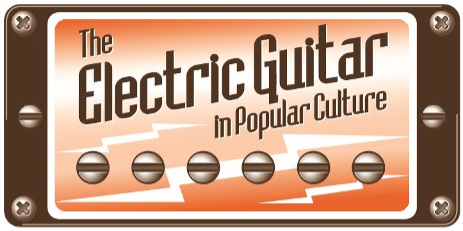
Panel 04 - Interpretations of the Electric Guitar in African Nations
The Electric Guitar in Kenyan Benga: Texture, Arrangement, and Rhythm
Start Date
28-3-2015 9:30 AM
Description
During the late 1960s in Kenya, various strains of hybrid music that had been percolating since the 1940s coalesced into something that would have a staying presence as a genre: benga, an electric guitar band dance style initiated by musicians of the Luo community. Benga emerged from small acoustic guitar groups that catered to a rural audience. With the ascendance of the electric guitar band as a globalized standard for entertainment, as well as a burgeoning recording industry, in the the early 1970s Kenyans witnessed a boom in the production of guitar band music. While Luo benga can be seen as one part of a regional guitar band movement (with links to Congolese and Tanzanian variants), it has important distinctions in its sound and in the way Luo guitarists used their instruments to negotiate emerging concepts of harmonic design, rhythm and textural arrangements. A quality of benga that expressed both links to Luo folksong tradition and innovation from it, as well as what distinguished it from regional trends in guitar music was its heterophonic texture, and the way it bridged the divide between melody and harmony. This paper explains how benga often existed in a gray area between monophonic, melody-driven, horizontally-oriented music and harmonically determined, vertically-oriented music. Benga’s emphasis on short open-ended cycles created a versatile platform for Luo musicians to produce music that experimented with the boundaries between rigidly defined harmonic movement and melodic dominance; and the guitar, an instrument that itself had evolved in circumstances where the traversing of these boundaries was being addressed, also provided a tool well-suited to experimentation. A discussion of representative recordings from different eras in benga’s development illustrates how the electric guitar acted as a catalyst for the emergence of a new Kenyan style that was both innovative and enabled the aesthetics of indigenous folksong to be articulated in unprecedented ways.
The Electric Guitar in Kenyan Benga: Texture, Arrangement, and Rhythm
During the late 1960s in Kenya, various strains of hybrid music that had been percolating since the 1940s coalesced into something that would have a staying presence as a genre: benga, an electric guitar band dance style initiated by musicians of the Luo community. Benga emerged from small acoustic guitar groups that catered to a rural audience. With the ascendance of the electric guitar band as a globalized standard for entertainment, as well as a burgeoning recording industry, in the the early 1970s Kenyans witnessed a boom in the production of guitar band music. While Luo benga can be seen as one part of a regional guitar band movement (with links to Congolese and Tanzanian variants), it has important distinctions in its sound and in the way Luo guitarists used their instruments to negotiate emerging concepts of harmonic design, rhythm and textural arrangements. A quality of benga that expressed both links to Luo folksong tradition and innovation from it, as well as what distinguished it from regional trends in guitar music was its heterophonic texture, and the way it bridged the divide between melody and harmony. This paper explains how benga often existed in a gray area between monophonic, melody-driven, horizontally-oriented music and harmonically determined, vertically-oriented music. Benga’s emphasis on short open-ended cycles created a versatile platform for Luo musicians to produce music that experimented with the boundaries between rigidly defined harmonic movement and melodic dominance; and the guitar, an instrument that itself had evolved in circumstances where the traversing of these boundaries was being addressed, also provided a tool well-suited to experimentation. A discussion of representative recordings from different eras in benga’s development illustrates how the electric guitar acted as a catalyst for the emergence of a new Kenyan style that was both innovative and enabled the aesthetics of indigenous folksong to be articulated in unprecedented ways.

